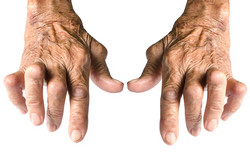Why immune systems turn against themselves
Autoimmune disorders occur when the body's immune system creates ‘autoantibodies’ that attack and destroy its own healthy tissues. Since immune systems normally produce antibodies to defend the body against foreign invaders like bacteria, some autoimmune disorders may be triggered by bacterial infection. Anti-neutrophil cytoplasmic antibodies (ANCAs) are a group of autoantibodies that attack white blood cells and damage blood vessels, causing a condition called ANCA-associated vasculitis (AAV). Since scientists found strong links between AAV and bacterial infection, it is an ideal model to study whether infection predisposes some people to autoimmune diseases. The EU-funded INTRICATE(opens in new window) (Infectious triggers of chronic autoimmunity) project used mouse models and blood samples from hundreds of AAV patients to understand what triggers AAV. One of the known targets of AAV autoantibodies is a protein that in humans, but not mice, resembles a bacterial protein. It is possible that in AAV sufferers, the human antibodies mistake this protein for the bacterial one, and therefore attack it. To test this, researchers genetically modified mice to produce the human version of this protein and then infected them with bacteria. There was no direct correlation between infection and production of autoantibodies; the relationship is much more complex. To understand why some people are more susceptible to autoimmune diseases, researchers also looked at the genetics of AAV sufferers and of the relevant bacteria. They found three human genes that were associated with AAV as well as other promising candidates. Importantly, they discovered genes that make patients susceptible to two different autoimmune disorders, providing new evidence that the two disorders are genetically distinct. Understanding the underlying causes of autoimmune disorders will allow researchers to develop new therapies. In addition, understanding the immune response in AAV sufferers can help researchers develop “biomarkers” that track the disorder in patients showing potential AAV symptoms.







